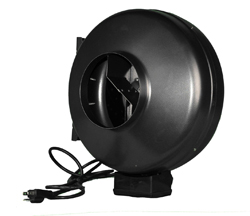
Categories
- Home
- Air Ventilation Fans
- Attic Ventilation Fans
- Barn Ventilation Fans
- Basement Ventilation Fans
- Bathroom Ceiling Ventilation Fans
- Bathroom Ventilation Fans
- Bathroom Ventilation Fans Installation
- Bathroom Ventilation Fans with Light
- Bathroom Wall Ventilation Fans
- Best Bathroom Ventilation Fans
- Best Ventilation Fans
- Ceiling Ventilation Fans
- Centrifugal Ventilation Fans
- Commercial Kitchen Ventilation Fans
- Commercial Ventilation Fans
- Confined Space Ventilation Fans
- Crawl Space Ventilation Fans
- Domestic Ventilation Fans
- Ductless Ventilation Fans
- Electric Ventilation Fans
- Exhaust Ventilation Fans
- Explosion Proof Ventilation Fans
- Fans for Ventilation
- Garage Ventilation Fans
- Greenhouse Ventilation Fans
- Home Ventilation Fans
- House Ventilation Fans
- Hunter Ventilation Fans
- In Line Ventilation Fans
- Industrial Roof Ventilation Fans
- Industrial Ventilation Fans
- Inline Ventilation Fans
- Jet Fans Basement Ventilation
- Kitchen Ventilation Fans
- Large Ventilation Fans
- Marine Ventilation Fans
- Mine Ventilation Fans
- Mining Ventilation Fans
- Panasonic Bathroom Ventilation Fans
- Panasonic Ventilation Fans
- Penn Ventilation Exhaust Fans
- Penn Ventilation Fans
- Portable Ventilation Fans
- Positive Pressure Ventilation Fans
- Quiet Ventilation Fans
- Roof Ventilation Fans
- Rooftop Ventilation Fans
- Room Ventilation Fans
- Shower Ventilation Fans
- Sidewall Ventilation Fans
- Small Ventilation Fans
- Solar Attic Ventilation Fans
- Solar Powered Attic Ventilation Fans
- Solar Roof Ventilation Fans
- Solar Ventilation Fans
- Sub Floor Ventilation Fans
- Tunnel Ventilation Fans
- Under House Ventilation Fans
- Underfloor Ventilation Fans
- Underground Ventilation Fans
- Ventilation Fans
- Ventilation Fans Bathroom
- Ventilation Fans FAQs
- Ventilation Fans for Grow Rooms
- Ventilation Fans for Kitchens
- Ventilation Fans Home
- Ventilation Fans Manufacturers
- Ventilation Fans Reviews
- Ventilation Fans Suppliers
- Wall Mounted Ventilation Fans
- Wall Ventilation Fans
- Whole House Ventilation Fans
- Window Ventilation Fans
- Woods Ventilation Fans
Inline Ventilation Fans
Proper ventilation is a very important factor while constructing a building. Inside a home, bathrooms, kitchens, attics, garages, etc. require to be fitted with ventilation fan systems that are able to remove hot, damp air and replace it with fresh, cool air. Additionally, the removal of smoke, chemicals and strong odors is also a function of ventilation fans.
Types of Ventilation Fans
Ventilation fans may be of two types: Standard and Inline. Let’s take a look at the major differences between the two.- Functioning: The standard exhaust fan is mounted in to a wall, or just above the ceiling. It has an intake and outlet vent cut into the ceiling below and the roof above respectively. This type of fan works by the creation of suction that results in the pulling of air upwards through the vent. The fan blows the sucked up air out the other end, so that it is expelled outside of the house.
An Inline ventilation fan works in a similar manner, but with a different design. Such fans are mounted to a space in the attic of the house. One of the ducts connects the fan to a vent in the ceiling. The other one connects the fan to the roof vent. The first duct sucks air into the fan, which blows into the second duct. The air is removed from the building through this duct. - Installation: A standard ventilation fan is quite easy to install. However, there are limitations on the placement of the fan. Space and weight need to be taken into consideration, due to installation on the ceiling. Inline ventilation fans, on the other hand, do not have any weight application at the ceiling level. The fan noise is also much lower, since the fan is placed at a greater distance from the actual room.
Components of Inline Ventilation Fans
If you are planning to get an inline ventilation fan system installed for your kitchen or bathroom, you need to understand the various components that form a part of this system. Most inline ventilation fans have five to six components.- The Fan: This is the most obvious component of an inline ventilation system. The size and type of fan should depend on the size of the space that needs ventilation. The diameter of the ductwork is also important in selecting the fan.
- Grille: A grille usually serves as an exhaust point for the ventilation. Grilles are available in different sizes and shapes for an aesthetic appeal. The diameter of the ductwork needs to be matched with the grille duct collar.
- Ductwork: Inline ventilation fans require a ductwork to connect the fan and the grille with the exterior vent. This runs through the attic space.
- Exterior Vent: This component is required to be able to disperse off unwanted air to the exterior of the building. The exterior vent can be made through a wall or the roof.
Back to Top
